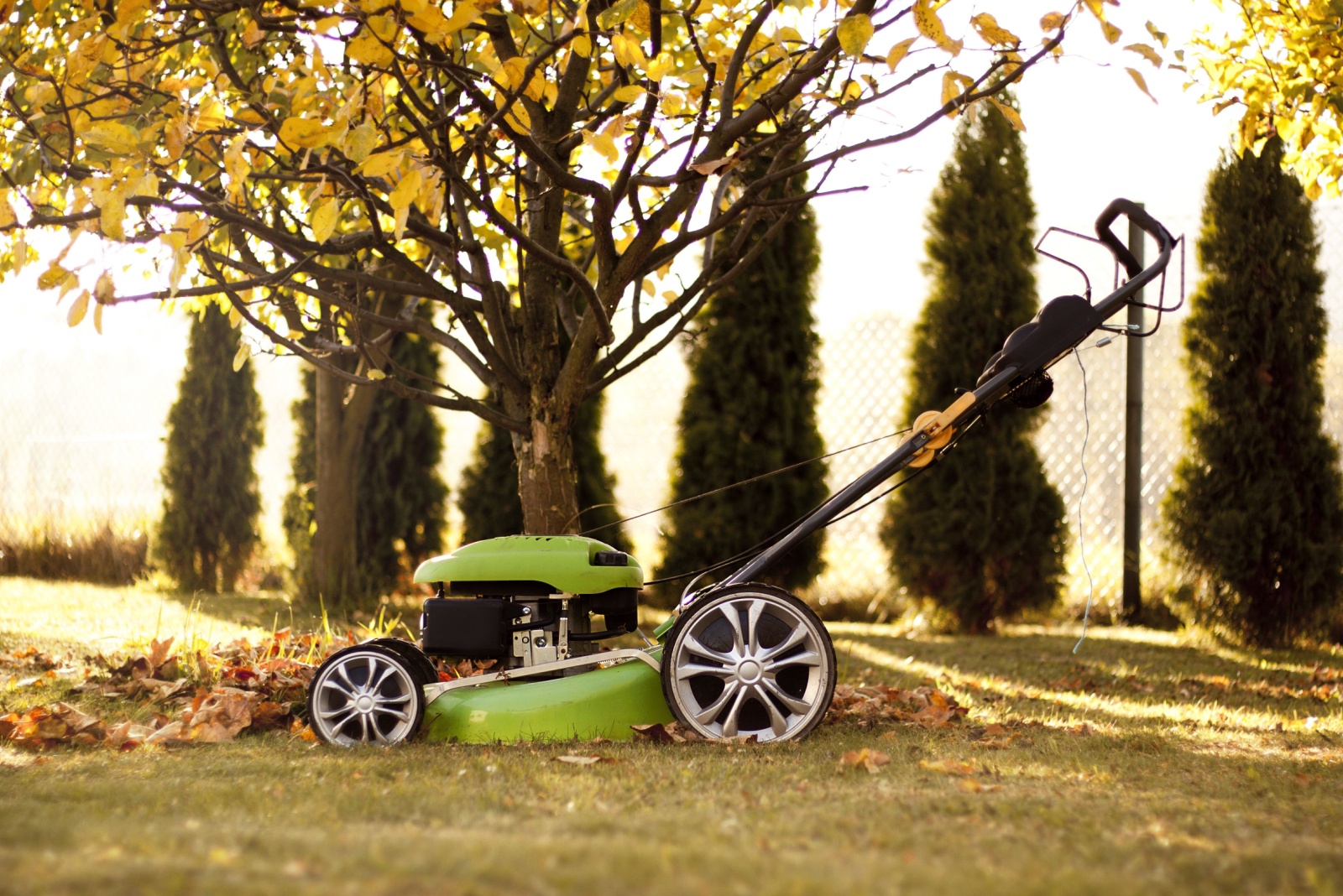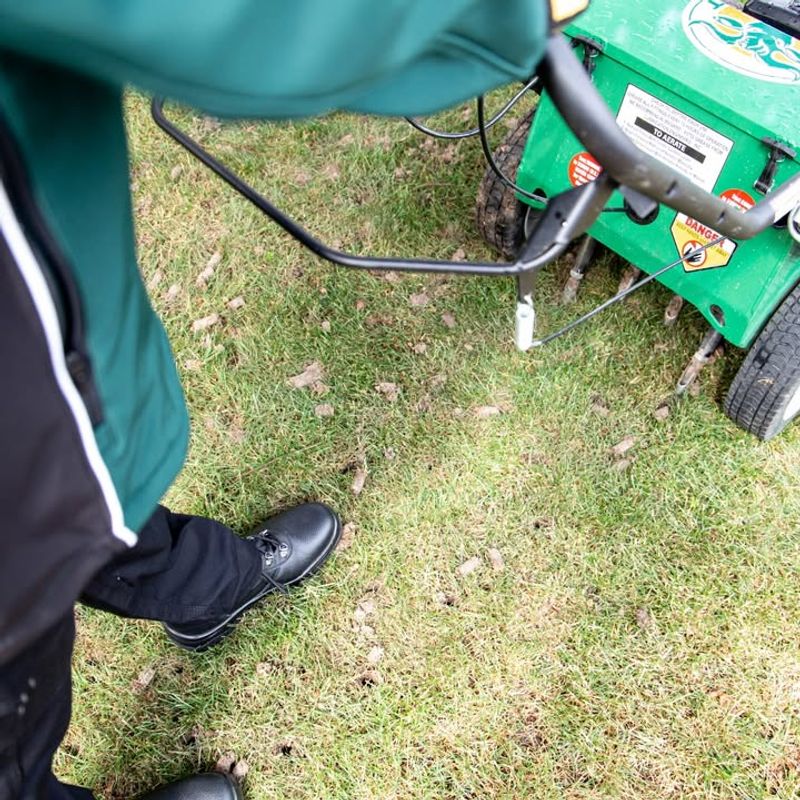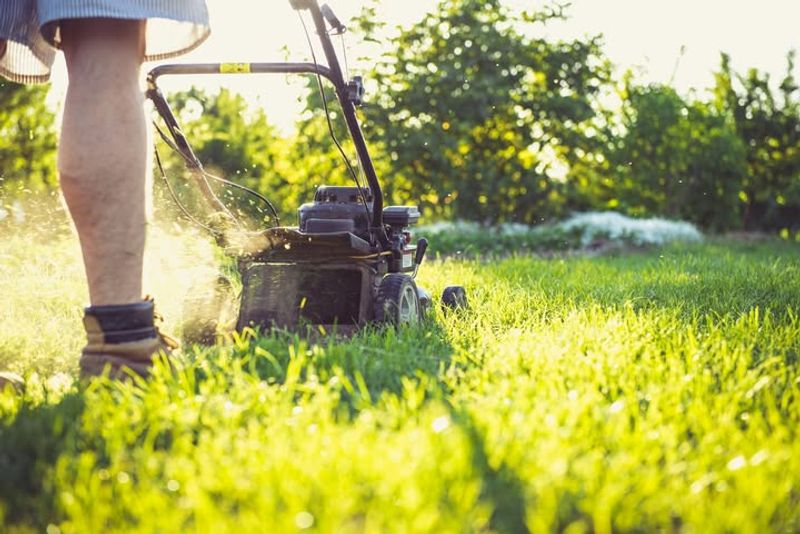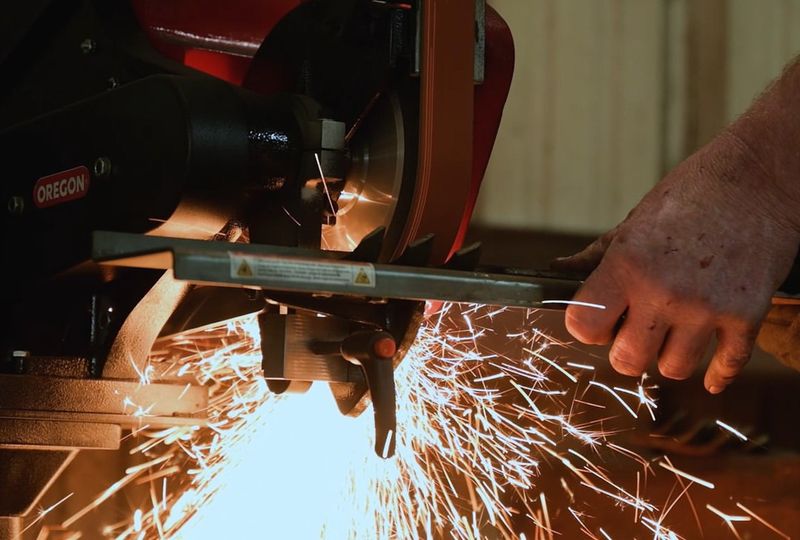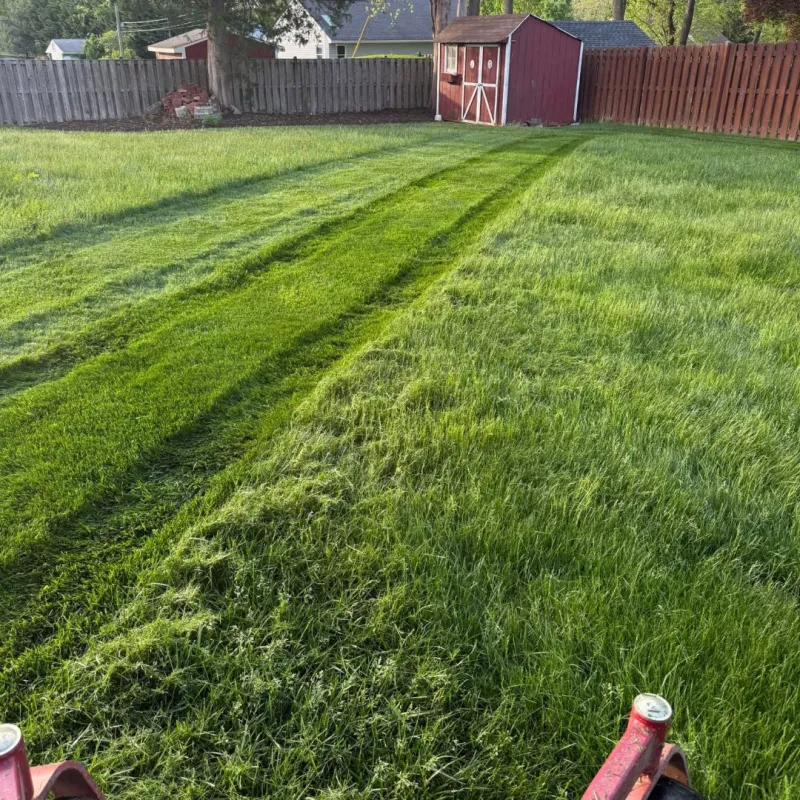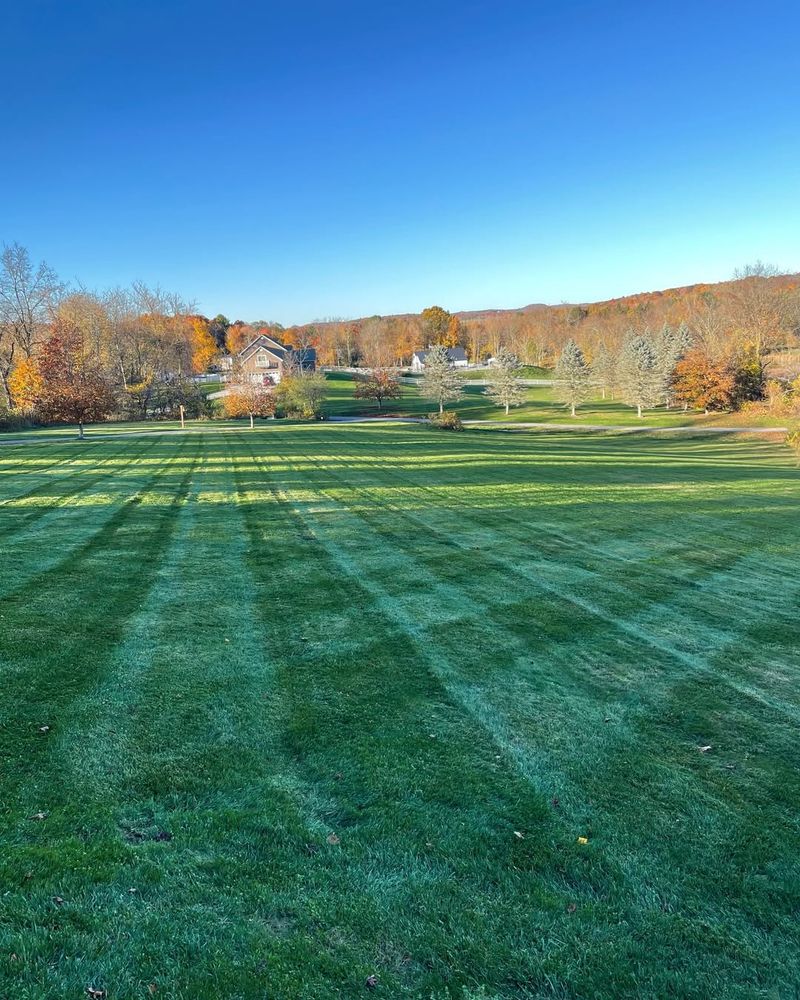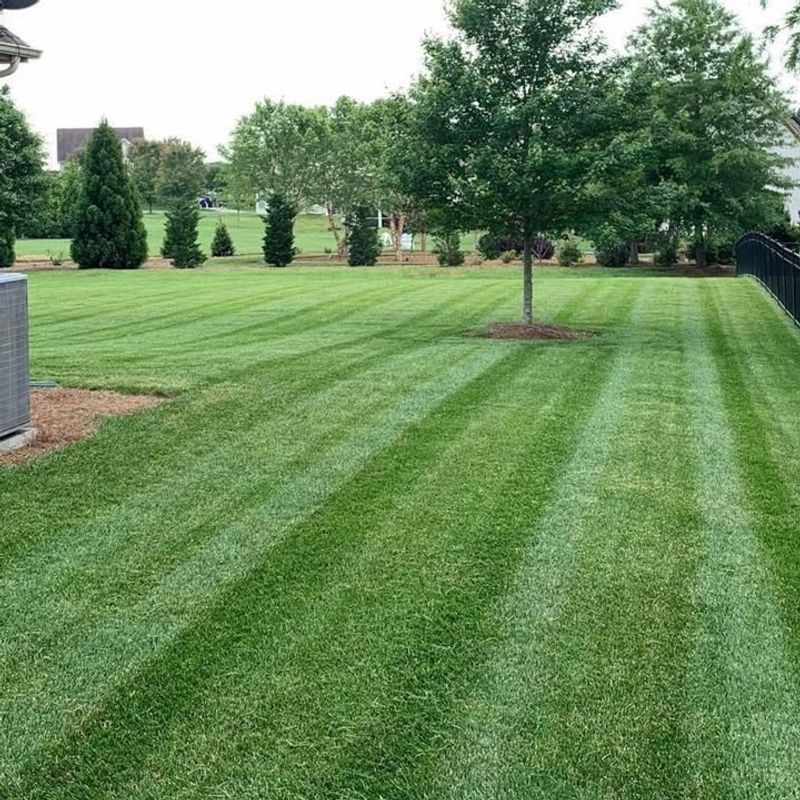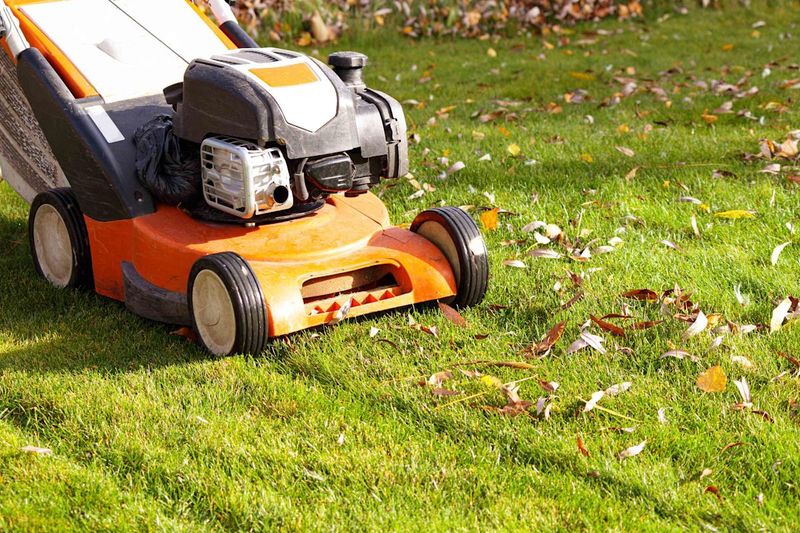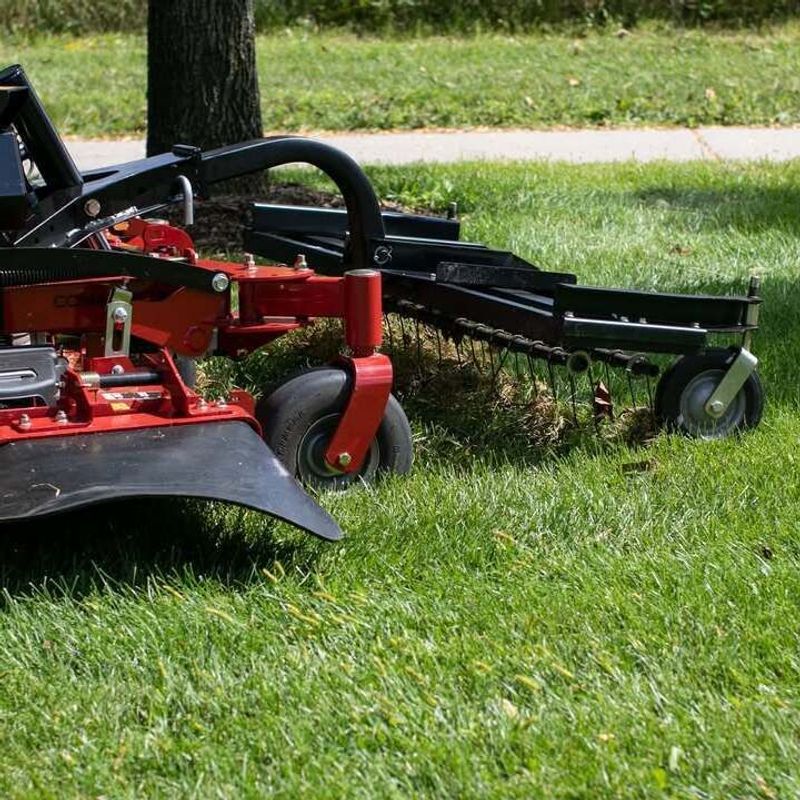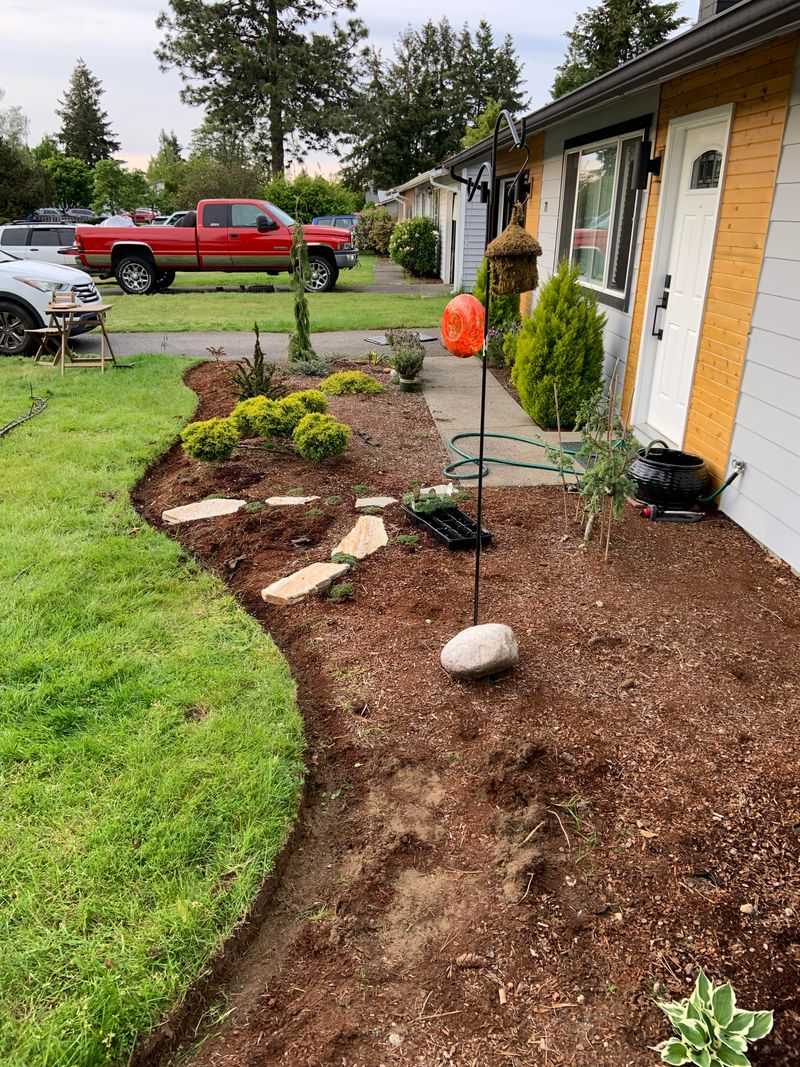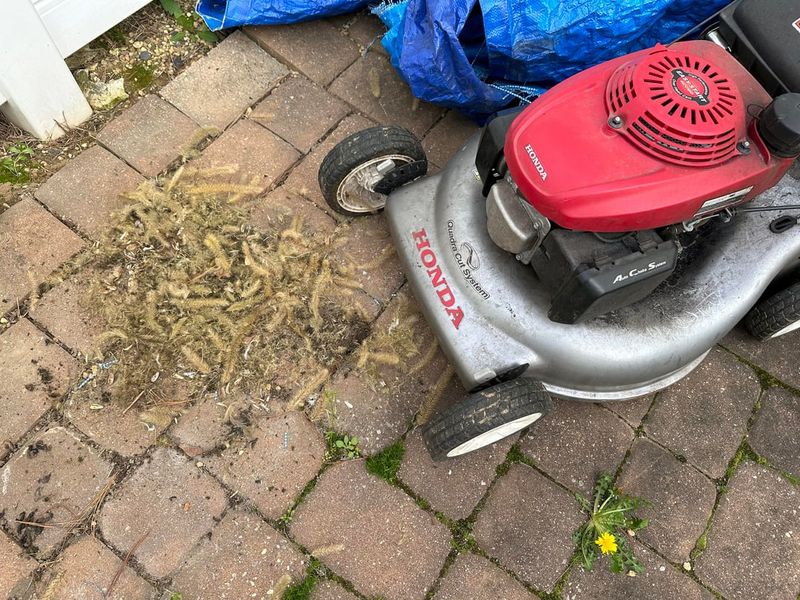November in Texas brings cooler weather and slower grass growth, but your lawn still needs attention. Keeping up with proper mowing practices during this transition month helps your yard stay healthy through winter and bounce back beautifully in spring.
If you’re dealing with Bermuda, St. Augustine, or other warm-season grasses, following the right techniques now makes all the difference.
1. Raise Your Mower Blade Height
Cooler temperatures mean your grass grows slower and needs extra protection. Setting your mower deck higher allows grass blades to stay longer, which helps them capture more sunlight during shorter November days.
Taller grass also develops stronger root systems that survive winter better. For most Texas lawns, aim for about three to four inches in height.
Cutting too short weakens your grass and makes it vulnerable to frost damage and weed invasion come spring.
2. Mow Less Frequently Than Summer
Your Texas lawn simply doesn’t grow as fast when temperatures drop. While summer might have required weekly mowing sessions, November grass grows at a snail’s pace by comparison.
Watch your lawn carefully and only mow when necessary, typically every two to three weeks. Cutting grass that hasn’t grown enough stresses the plants unnecessarily.
Pay attention to growth patterns rather than sticking to a rigid schedule, and you’ll save time while keeping your yard healthier throughout the season.
3. Keep Mower Blades Sharp
Dull blades tear grass instead of cutting it cleanly, leaving ragged brown edges that look terrible. Those rough cuts also create openings where diseases can sneak in and damage your lawn during vulnerable winter months.
Sharp blades make clean cuts that heal quickly and keep grass healthy. Check your blades regularly and sharpen them at least once before winter arrives.
Professional sharpening costs little but delivers big results for your lawn’s appearance and health.
4. Avoid Mowing Wet Grass
November often brings morning dew and occasional rain showers across Texas. Mowing wet grass creates clumps that smother your lawn and block sunlight from reaching the soil beneath.
Wet conditions also make your mower work harder and can damage turf by creating ruts and compacting soil. Slippery grass increases your risk of accidents too.
Wait until grass dries completely before starting your mower, even if it means postponing your mowing day by a few hours or until tomorrow.
5. Change Your Mowing Pattern
Grass is smarter than you think and actually leans in the direction you mow. Repeating the same pattern week after week trains grass to grow at an angle, creating an uneven appearance.
Switching directions each time you mow encourages upright growth and prevents soil compaction in wheel tracks. Try diagonal, horizontal, or vertical patterns to keep things interesting.
Rotating patterns also helps you spot problem areas in your yard that might need extra attention before winter sets in completely.
6. Leave Grass Clippings Behind
Many homeowners bag clippings thinking it looks neater, but you’re actually throwing away free fertilizer. Short clippings decompose quickly and return valuable nutrients like nitrogen back into your soil.
This natural process feeds your Texas lawn without costing a penny and reduces the need for chemical fertilizers. Clippings also help retain soil moisture during dry November days.
Just make sure clippings are short and spread evenly so they don’t create thick mats that block sunlight from reaching grass below.
7. Watch for Frost Before Mowing
North Texas sometimes experiences early frost in November, and mowing frozen grass causes serious damage. Frozen grass blades are brittle and break easily under mower wheels, leaving ugly brown patches.
Walking or mowing on frosted grass crushes plant cells that can’t recover properly. Wait until frost melts completely and grass warms up before starting your mower.
Patience saves your lawn from unnecessary stress and keeps it looking green longer. Check weather forecasts and plan your mowing days around temperature drops accordingly.
8. Clean Your Mower Deck Regularly
Grass clippings stick to your mower deck and create buildup that affects cutting performance. Old, caked-on debris can harbor diseases that spread to healthy grass with each pass you make.
A dirty deck also makes your mower work harder and wear out faster than necessary. After each mowing session, scrape away clippings and rinse the deck thoroughly.
Regular cleaning takes just minutes but extends your mower’s life and protects your Texas lawn from potential fungal infections that thrive in decomposing plant matter.
9. Trim Edges For A Polished Look
Even with slower growth, grass along sidewalks and driveways still creeps over edges. Taking time to edge gives your Texas yard a finished, professional appearance that stands out in your neighborhood.
Sharp edges also prevent grass from spreading into flower beds where it doesn’t belong. Use a string trimmer or edging tool after mowing for best results.
Well-defined borders make even a simple lawn look carefully maintained and show you take pride in your home’s appearance throughout every season.
10. Prepare Your Mower For Winter Storage
Late November often marks your final mowing session until spring arrives. Before storing your mower, drain old fuel or add stabilizer to prevent engine problems when you start it again.
Change the oil, clean the air filter, and give everything a thorough inspection for worn parts. Cover your mower to protect it from dust and moisture during storage.
Proper winterization ensures your equipment starts easily next spring and saves money on costly repairs. Spending thirty minutes now prevents hours of frustration later.

